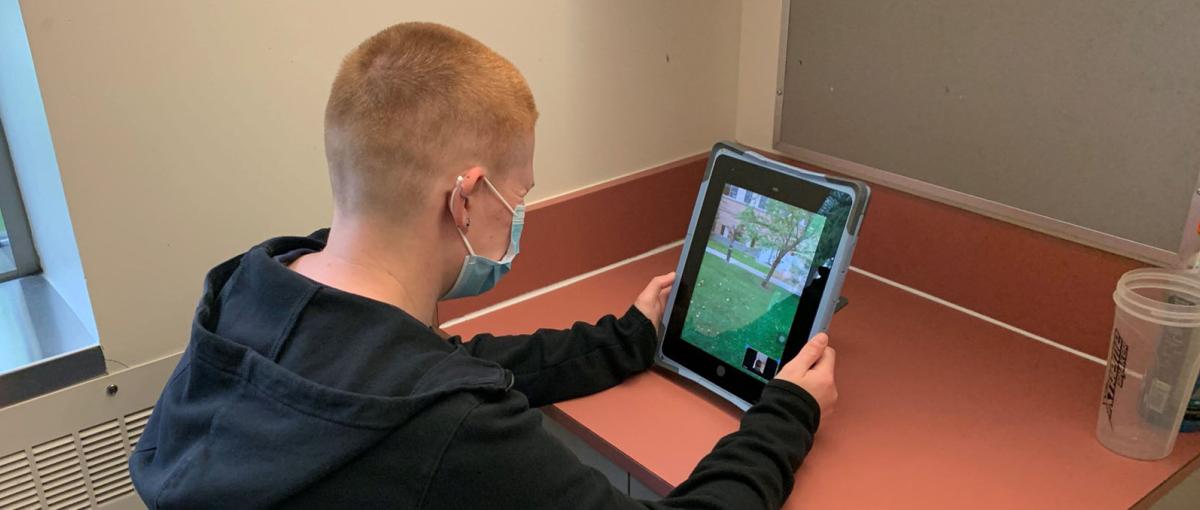Group therapy goes online
Mental health patients connect through Zoom

January 14, 2021
By Brenton Driedger, Social Media and Storytelling Advisor, Covenant Health
If you were to walk through the hallway of Unit 93 at the Grey Nuns Community Hospital, you shouldn’t be surprised to hear someone in their room shout, “Bingo!”
Staff and patients in the mental health unit have been finding creative ways to connect with each other during COVID-19. And one of the favourite recreation activities is intercom bingo, where each patient plays on a card in their room while staff call the numbers over the speaker.
“Somebody gets bingo, and you can hear it throughout the unit,” says unit manager Katie Kallechy. “It was really creative because you can’t sit around a table and play bingo anymore. So it was a cool system they were able to come up with.”
Playing intercom bingo is one of several ways the mental health unit has adapted to the COVID-19 reality. That creativity extends to the group therapy sessions it offers for both inpatients and outpatients. When in-person group therapy had to be shut down, staff began exploring other options.
“We had to do some thinking outside the box because of social distancing and limiting the traffic of people in the hospital. So we had to come up with some different solutions,” says Katie.
The hospital offers three programs providing different levels of support depending on patients' health needs: daily group therapy sessions for the unit’s 30 inpatients, a daily six-week class for about a dozen outpatients and a once-a-week program for outpatients who are more independent. Staff adapted all three groups and began offering them online through Zoom.
Emilie Lacasse, a registered nurse and mental health therapist, runs the six-week outpatient program, called the Psychiatric Partial Hospitalization program. It focuses on setting goals, building communication skills and practicing emotional regulation strategies. It also empowers patients to support each other by sharing their experiences. Emilie says in-person classes were a better fit, but they’ve made it work online.
“It’s not the same as being in a classroom together. There’s an element of connection that’s lost, unfortunately. For a lot of people, a huge part of attending a group program is just being able to leave the house and have somewhere to go and have people to meet.”
But Emilie says there are also positives to moving online. It makes the classes easier to access for patients who don’t live nearby, and it opens the door to larger class sizes. And with restrictions on in-person gatherings, it gives patients a way to connect with others.
“Patients are happy to have something. They’re happy to have the skills to help them cope, not only with their mental illness but also with the stress and anxiety that’s been brought on by COVID.”
The unit has made other adjustments to the program — shortening full days to half days and extending it from six to eight weeks. Emilie says they’re seeing encouraging progress and hearing positive feedback from patients.
“We see people when they first start. Oftentimes, they’ll be quieter or more reserved and guarded. But as the days and weeks go on, people start to recognize that it’s a safe place, and they open up and share a little bit more.”
Read more: Three tips for being safely social during COVID-19
Inpatients at the mental health unit who are no longer able to participate in in-person group activities enjoy being able to connect through their iPads.
“The fact that we’re able to do these Zoom groups gives patients something to look forward to,” says Katie. “It gives them something that they need to be healthy, whether in the community or in hospital.”